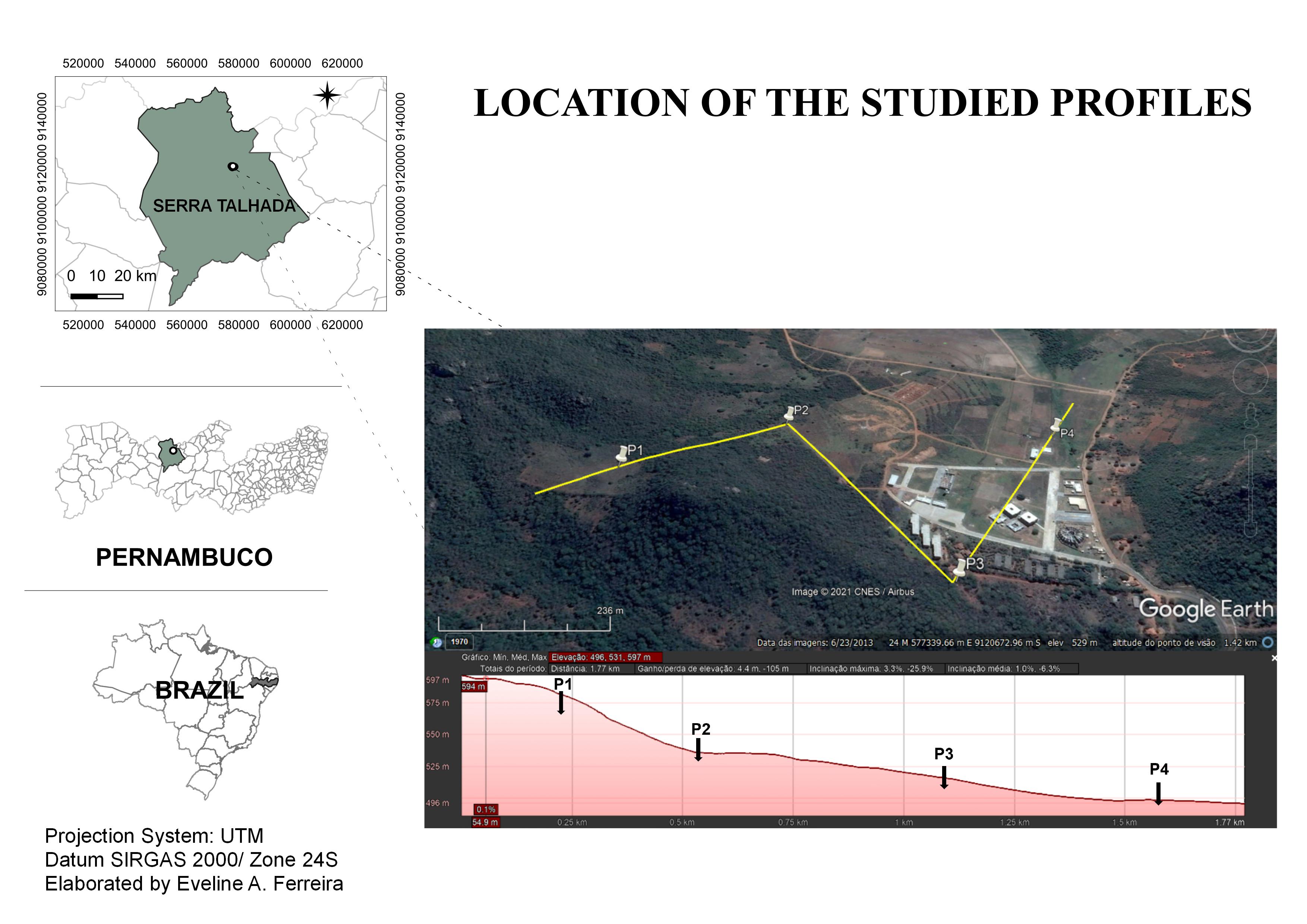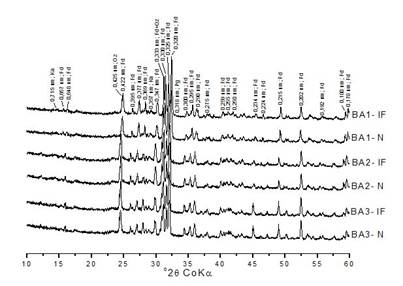ABSTRACT
Earthworms are known to improve soil fertility by altering the physicochemical properties of soil. However, the changes in properties of biogenic aggregates (produced by earthworms) in regions with different vegetation covers and soils of Inceptisol toposequence in the semi-arid region have not been studied. The objective of this work was to determine the variations of the physical, chemical, and mineralogical attributes and organic fractions of biogenic aggregates of earthworms under different vegetation covers and compare them to an Inceptisol toposequence in the semi-arid region of Pernambuco State, Brazil. For this study, four Inceptisol soil profiles were selected. The sampled points were P1-upper; P2-middle third; P3-middle third; and P4-lower slope, and the soils were collected at a depth of 0-0.20 m. The biogenic aggregates were found in the P3 samples collected from three areas with different vegetation covers: an area with mesquite tree vegetation (Prosopis juliflora [Sw] D.C.); an area with neem tree vegetation (Azadirachta indica A. Juss); and an area with forage palm and mesquite tree vegetation (Opuntia sp. and Nopalea sp.). Results indicate that the biogenic aggregates were in the form of irregular blocks with a size greater than 40 mm. As compared to Inceptisol samples, these aggregates tended to select particles of smaller diameter and exhibited higher concentrations of clay minerals. The chemical and organic fraction analysis revealed that the aggregates exhibited higher Ca2+, total organic carbon (TOC), labile and humic substances, regardless of the vegetation cover. The mineralogical analysis revealed that the action of earthworms did not change the quantity or type of clay minerals.
Index terms:
Coprolites; labile carbon; soil fertility; secondary minerals; humic substance

 Thumbnail
Thumbnail
 Thumbnail
Thumbnail
 Thumbnail
Thumbnail
 Thumbnail
Thumbnail
 Thumbnail
Thumbnail




